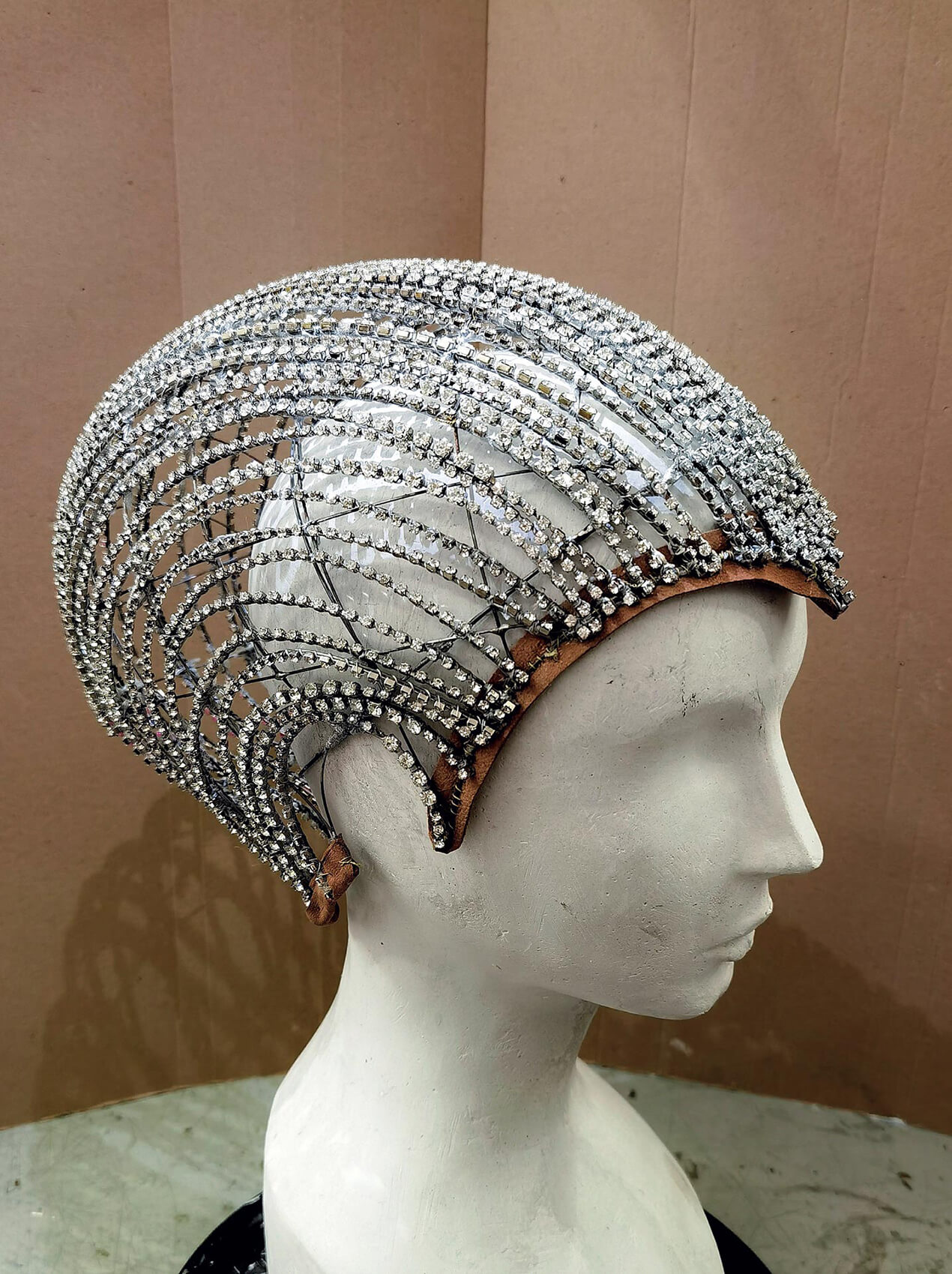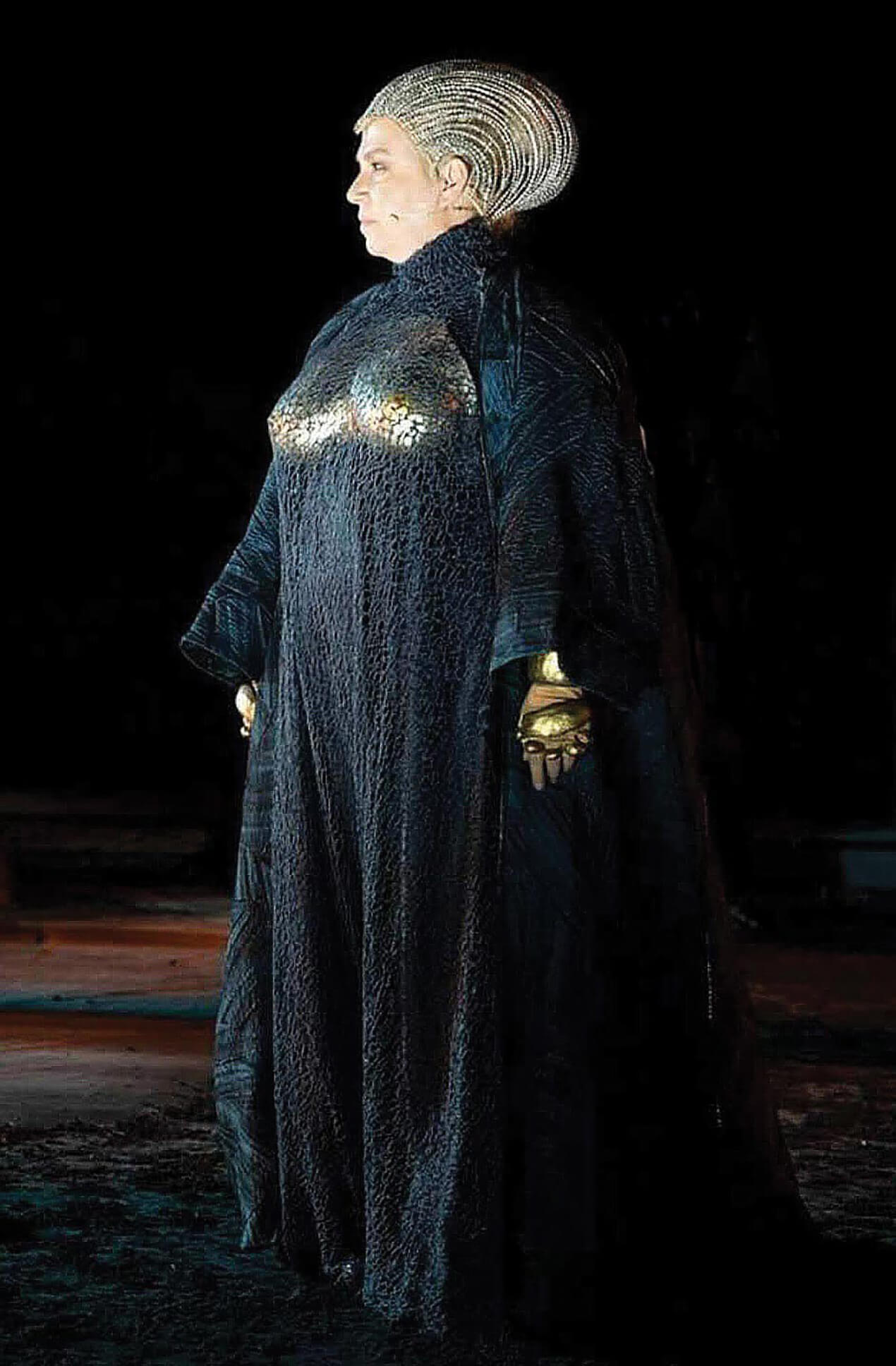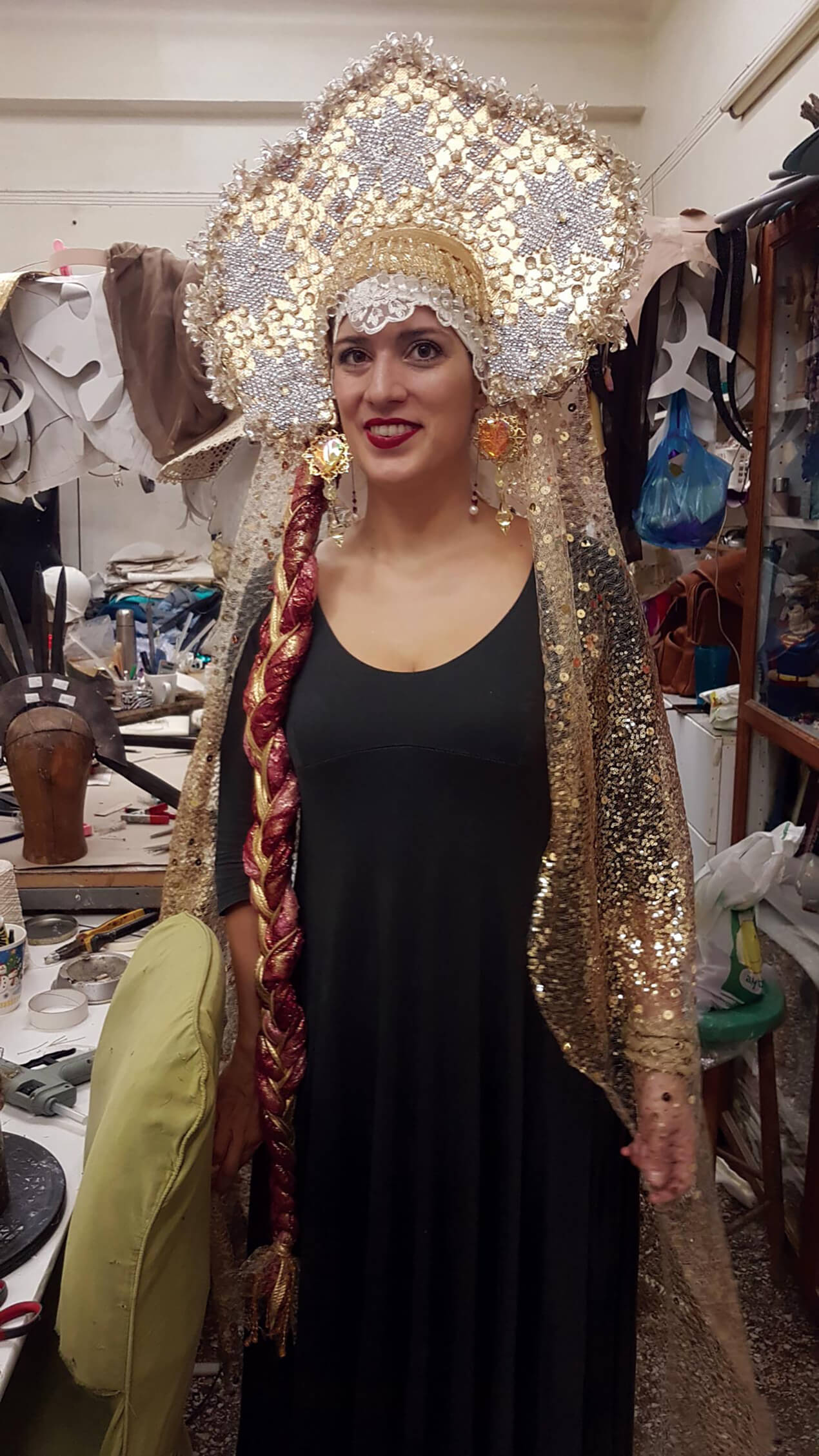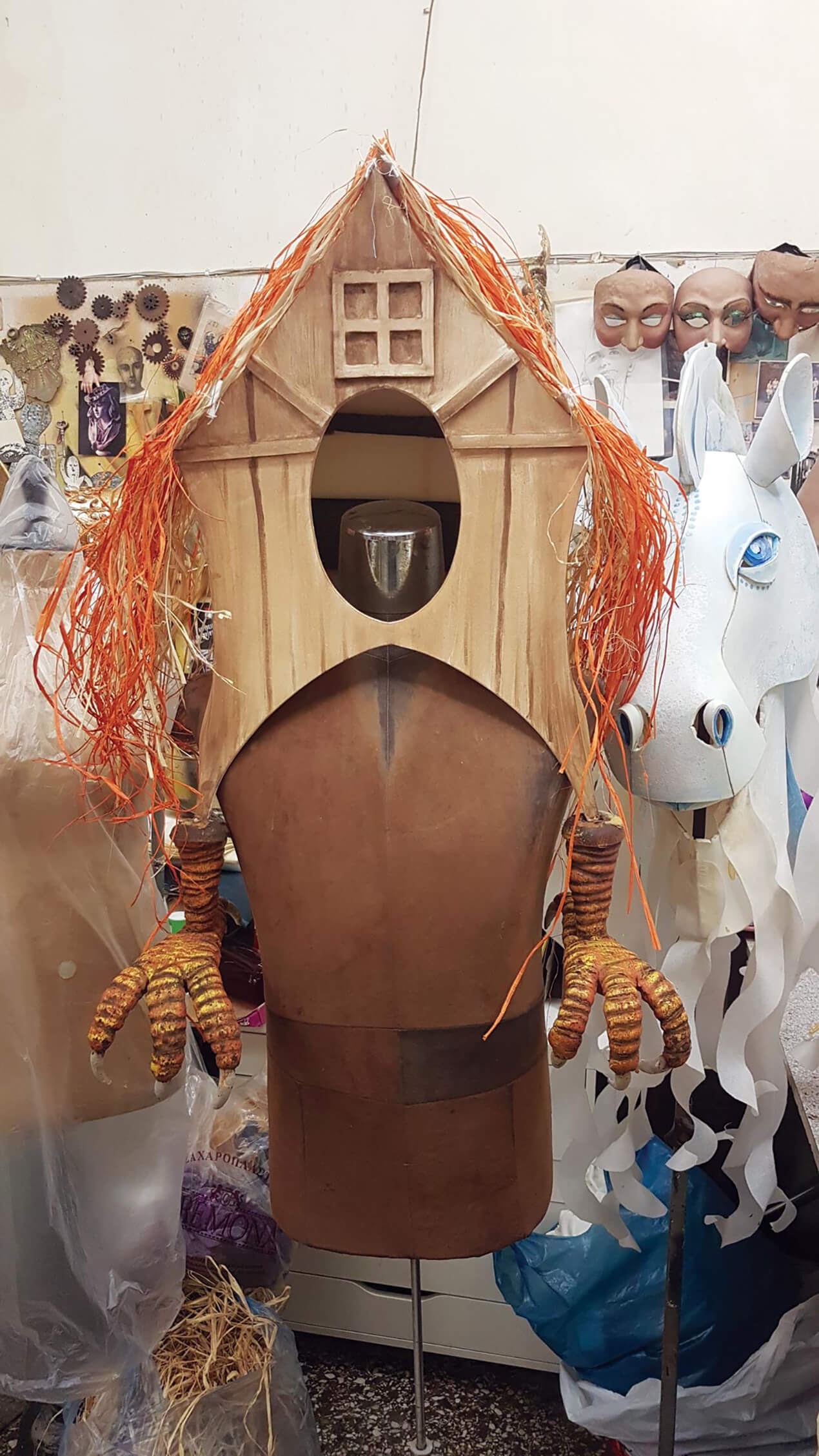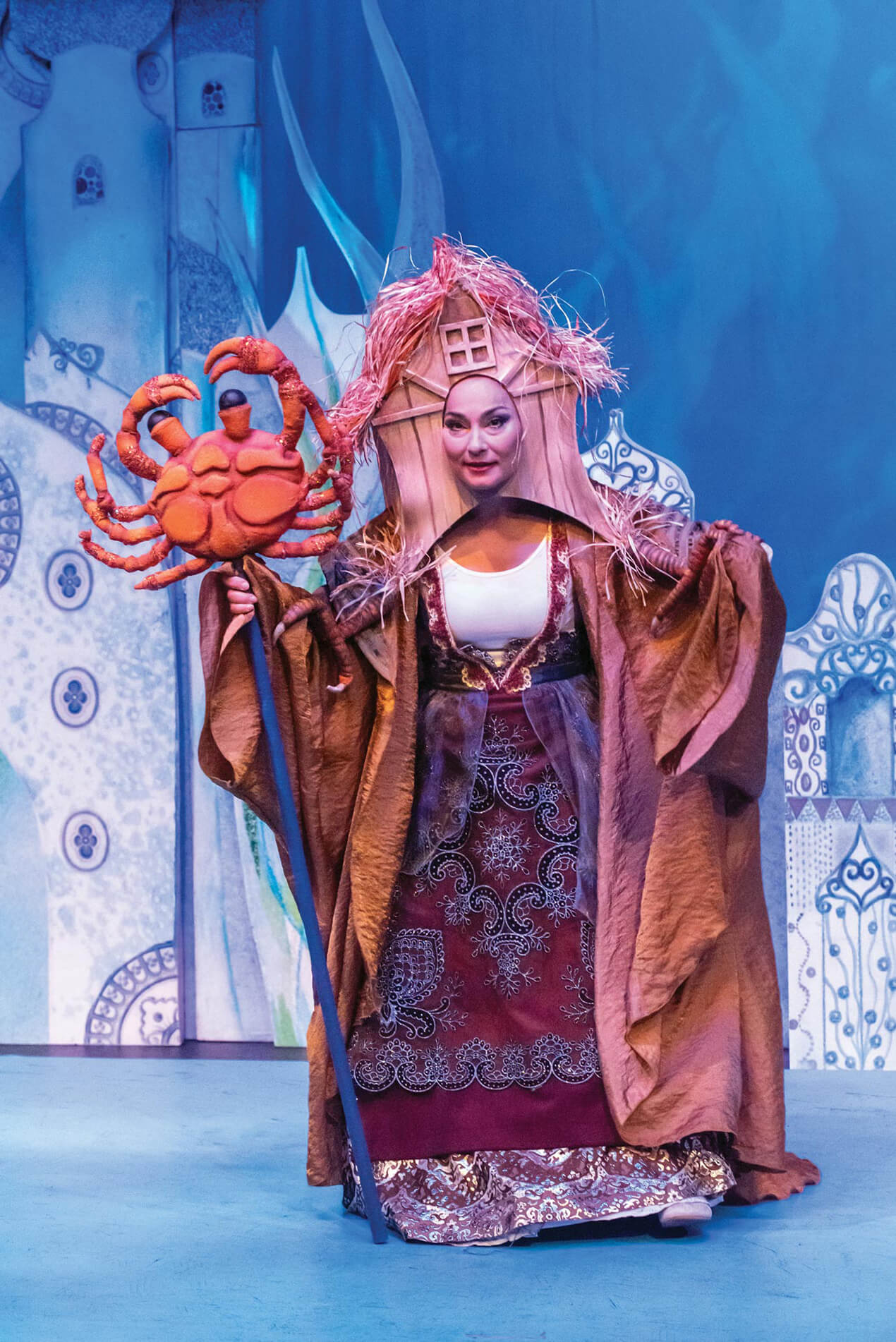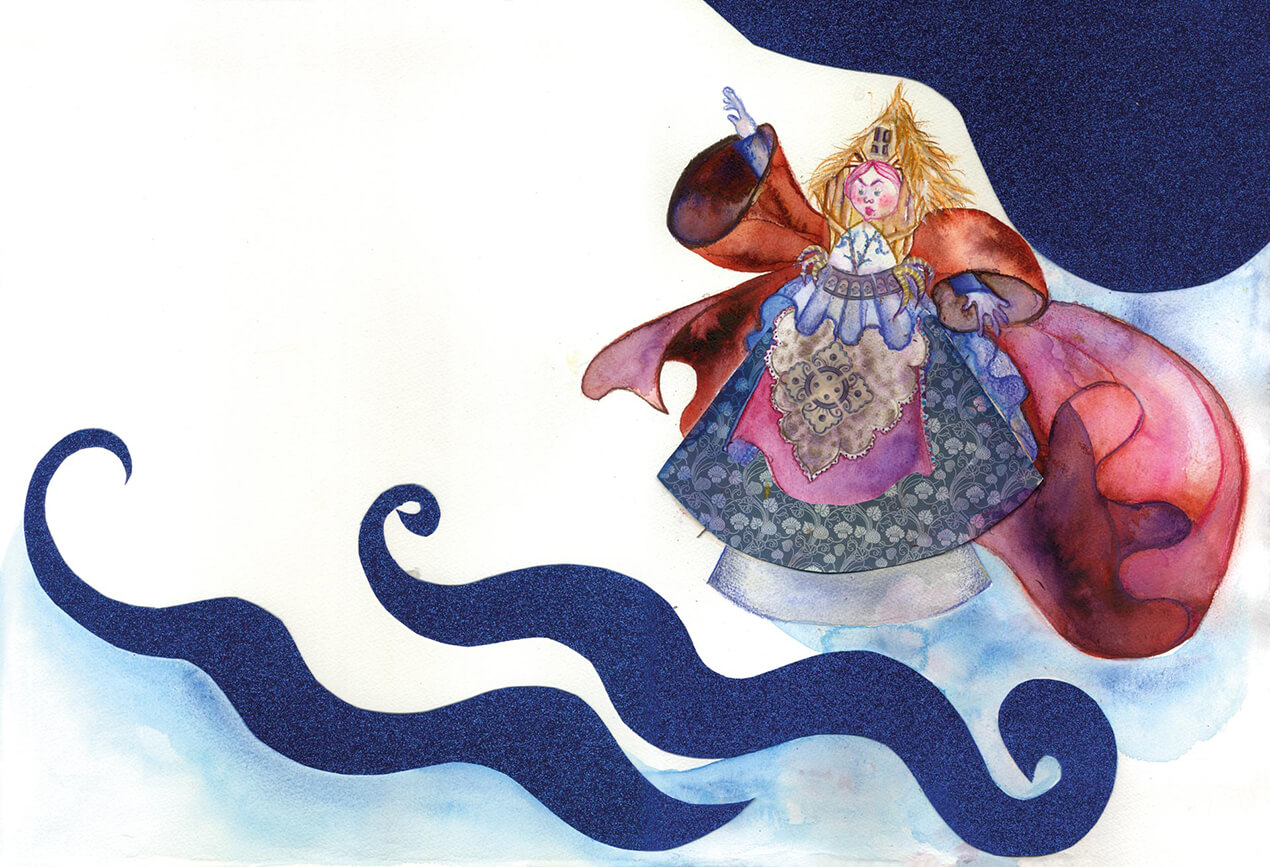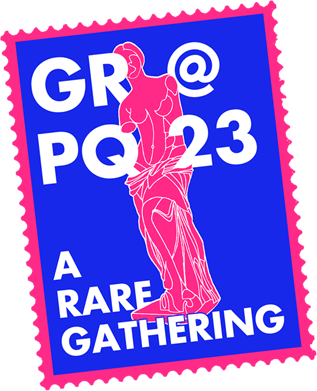Dimitra Kaisari: The Maker's Hands
Sofia Pantouvaki
In this year’s Prague Quadrennial 2023, the Greek entry in the Fragments II section highlights the work of the significant maker of theatrical constructions Dimitra Kaisari. Dimitra links a large number of Greek performance designers with whom she, over the years, has collaborated.
In the presented work, we see the “maker’s hands” that have been creating costume accessories, masks, props and other scenic objects for over thirty years. The designers’ names feature in the background, turning the model into a symbol of the scenographic realisation process representing the work of many.
Hence, the scale model is an allegory of scenographic collaboration, where the maker is a co-creator who interprets the designer’s ideas, counterproposes and eventually realises them on a material level through small-scale experiments, sketches, sampling, material testing, trial, verification, error and success, in a continuous creative dialogue that characterises the process from concept to realisation.
Through this curatorial proposal, the Greek entry in the Fragments II exhibition contributes to Greece’s wider curatorial approach for Prague Quadrennial 2023, characterised by a collective quality. It expands it by including the invisible “workers” in Greek performance design today. Simultaneously, the small-scale objects presented in the model are individual mini artworks that celebrate the material dimension of performance. The Maker’s Hands is a symbolic tribute to the collaborative creative nature of scenography.
The recognition of the technical collaborators’ contribution in the realisation of a scenographic or costume design is a timely issue in the international community for both the performing arts professionals as well as researchers investigating the material dimension of performance.
To date, two pertinent organised actions have taken place in Greece: the exhibition Dance and Theatre Costume – From Design to Realisation, a research-based collaboration of the Department of Theatre Studies of the University of the Peloponnese with the Innovative Foundation of Hymettus and the Hellenic Costume Society, in collaboration with the Greek National Opera, in 2008. This exhibition focussed primarily on costumes and costume accessories and in particular the costume making part of the realisation of a costume design.
The second action is an ongoing systematic initiative of the Hellenic Costume Society that regards the study of dressmaking in Greece, with a distinct part focussing on seamstresses employed in the production of theatre costumes. In the context of the relevant working group, practices of costume realisation have been studied at the sewing department of the Greek National Opera (by the undersigned) and of the National Theatre of Northern Greece (by Chryssa Mantaka, Assistant Professor at the Aristotle University of Thessaloniki). Among else, this research work is interested in evaluating the final material product -the theatrical costume- by those who made it.
In the international field, the number of scholarly studies focussing on the issue of stage realisation, the work and the role of the invisible contributors therein is growing. This is evident, indicatively, in the recent publication Working Backstage – A Cultural History and Ethnography of Technical Theater Labor by the American Theatre Historian Christin Essin (2021) and the thesis Technical skill, emotional intelligence and creative labour: The collaborative work of costume realisation (2021) by the Australian costumer and researcher Madeline Taylor. Christin Essin is also editor of a new Routledge series, “Studies in Scenographic Practice, Theatrical Design and Technical Craft”, dedicated to topics relevant to scenographic-costume design praxis and its practical realisation.
Moreover, an international network is currently in process of formation coordinated by the British lighting designer and academic Kelli Zezulka, bringing together practitioners and researchers related to the invisible technical professions of the stage and in particular the “backstage people and processes”.
All these actions and initiatives corroborate the fact that this concurrence is not random; it is associated with how the professional state of the industry has been exposed the past years during the pandemic. The Showstoppers! exhibition in New York City in 2021 also brought to public attention behind-the-scenes costume expertise to financially support the entertainment industry.
In addition to the professional perspective, there is an ethical and philosophical question: What is the technical collaborators’ creative contribution to the designers’ work? How do we identify, appreciate and acknowledge it? We touched upon this subject at the Prague Quadrennial 2019 with the panel Costume and Collaboration: Designers and Makers in the PQ19 Talks. Greece’s entry for the Fragments II exhibition brings to the fore the work of an important creative collaborator for designers related to Greece, contributing local insight to this global discourse.

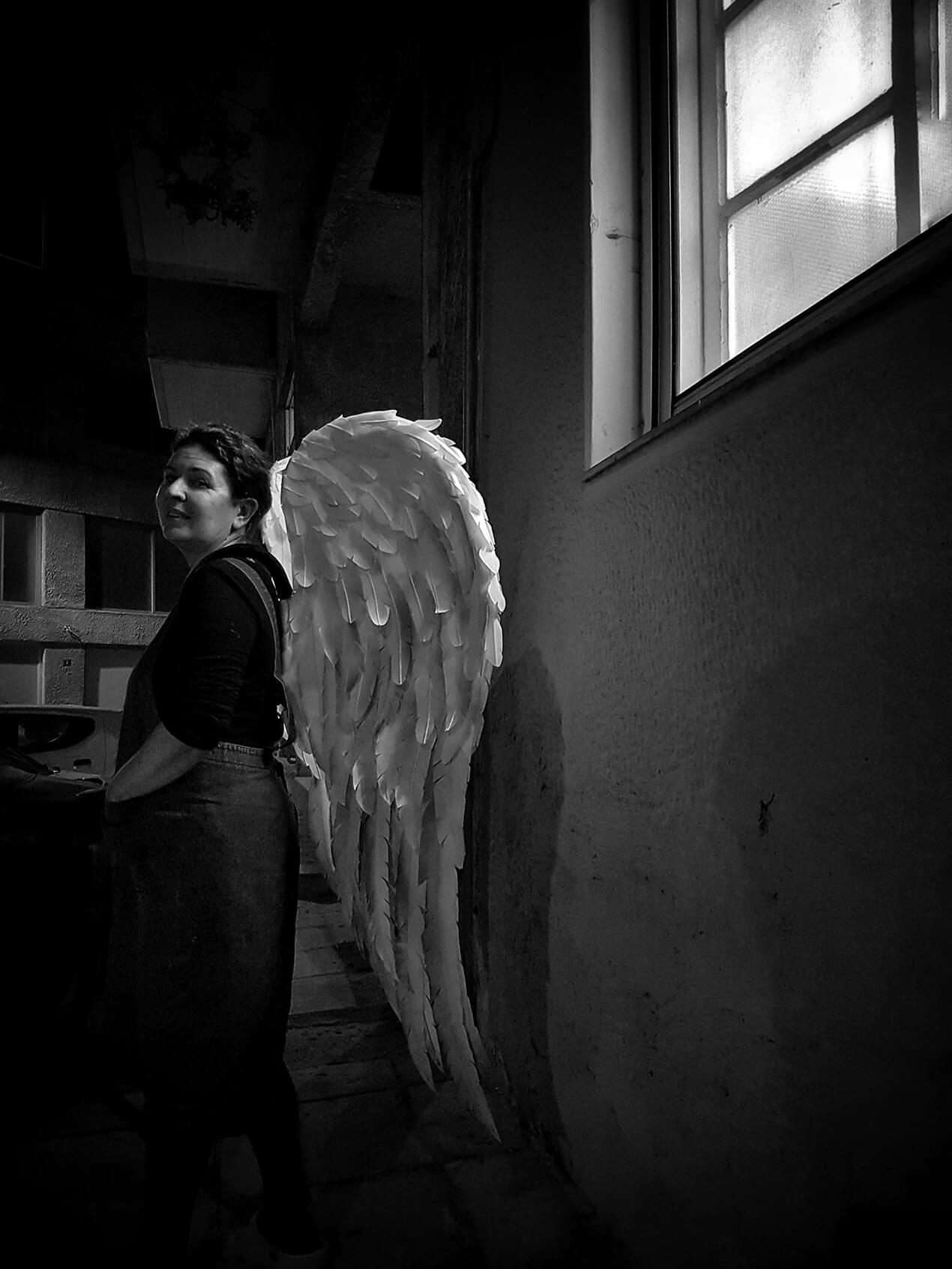
DIMITRA KAISARI’S WORK IN 14 PROJECTS
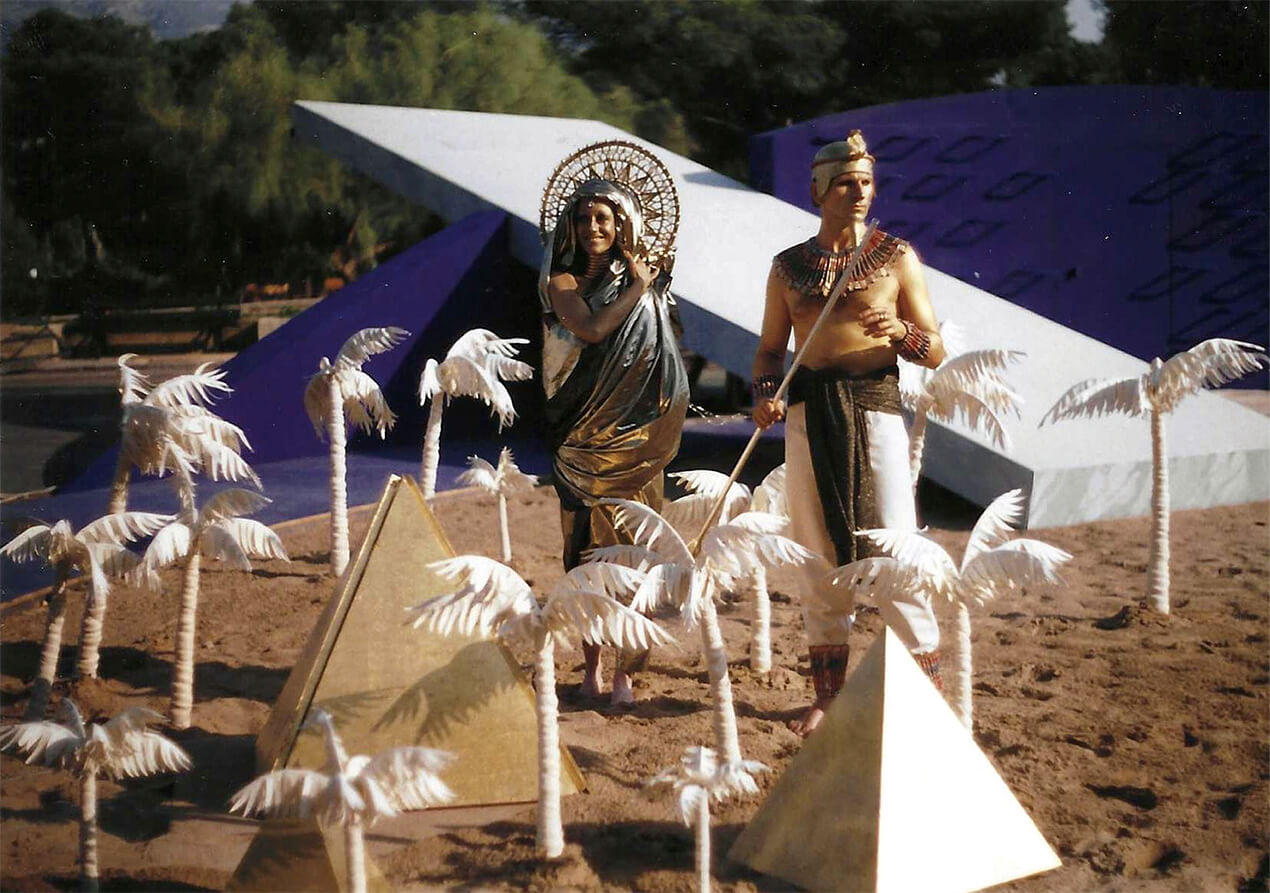


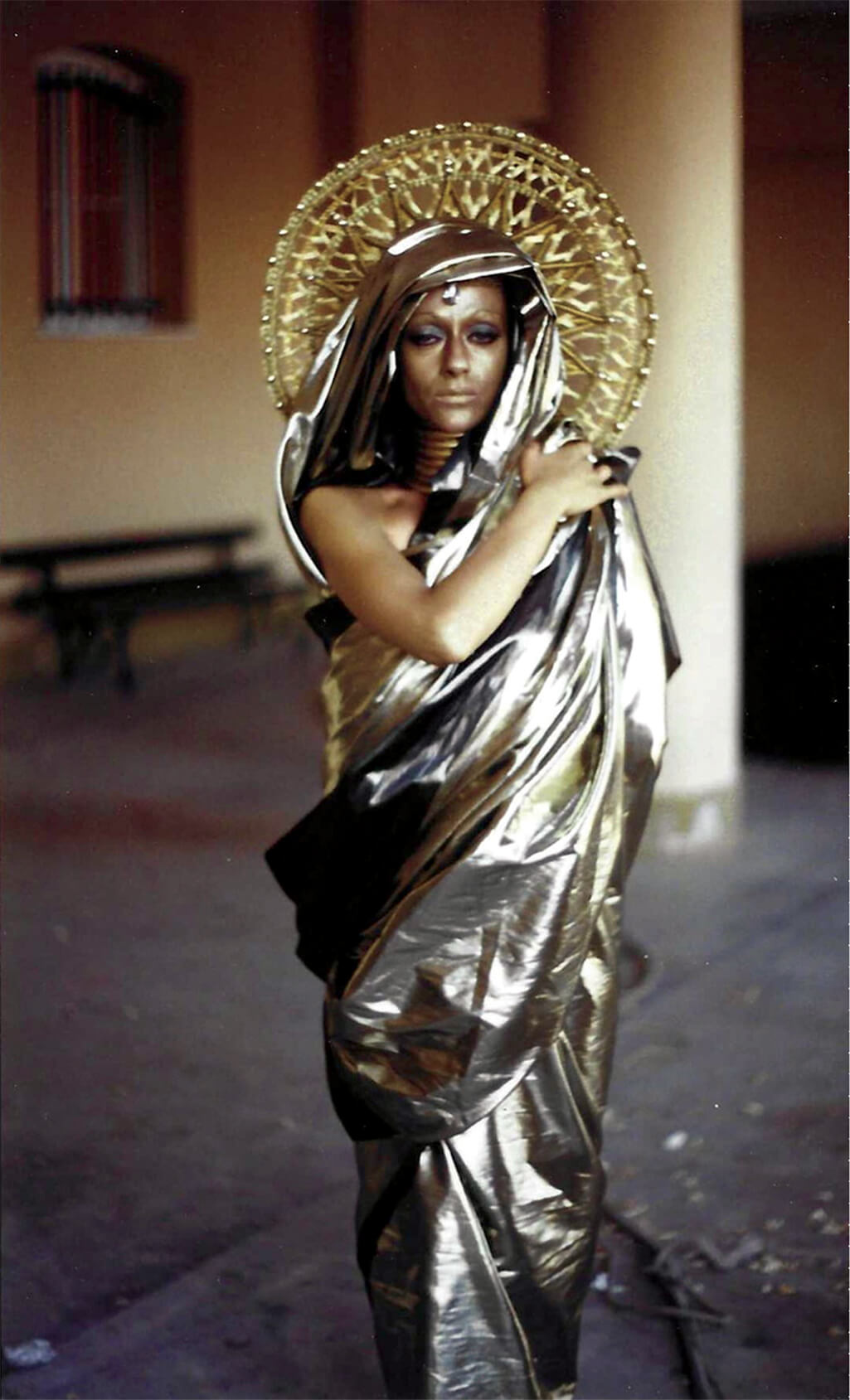
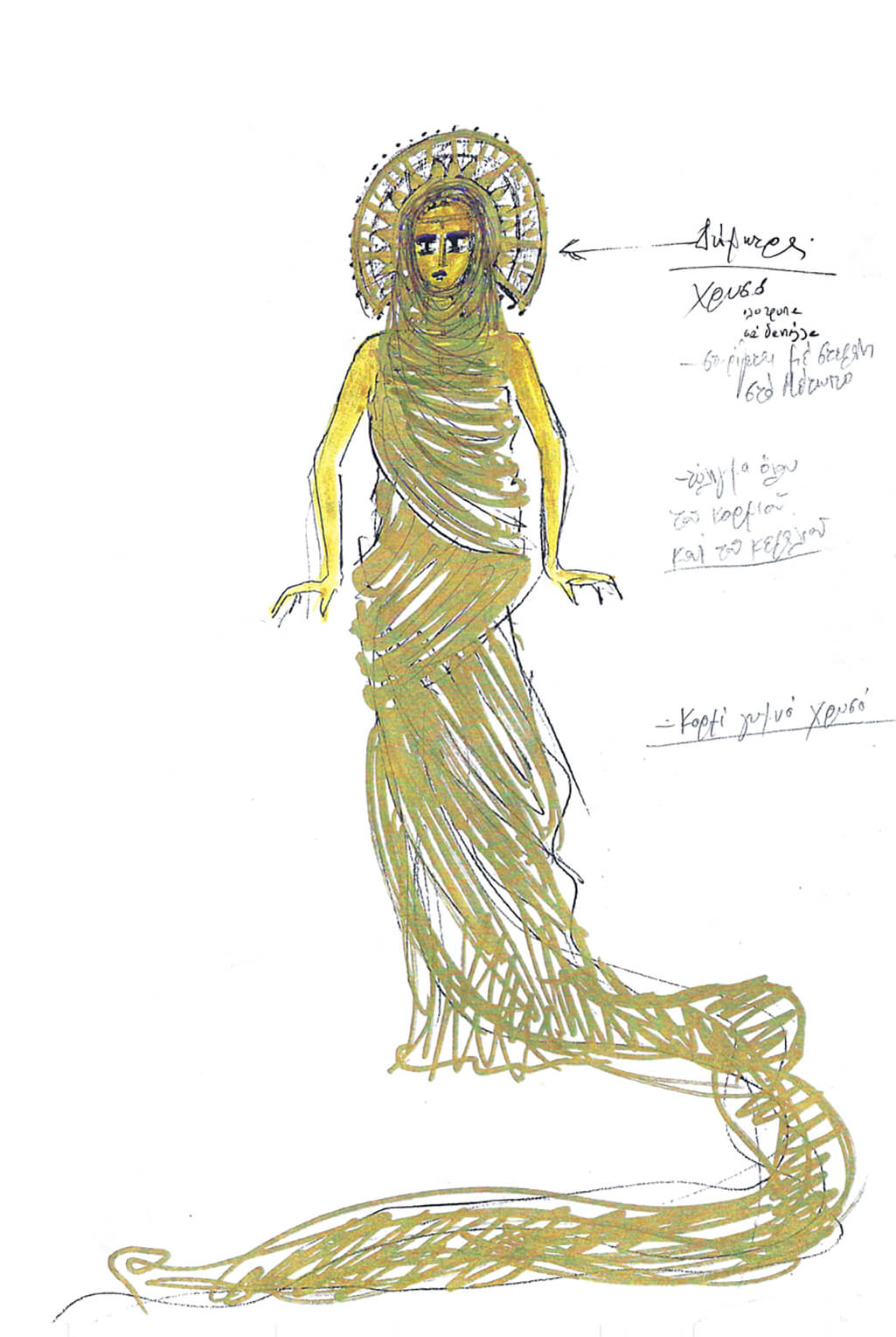
Helen
(Euripides)
1996 - Notos Theater Company
Direction: Yannis Houvardas
Set & Costume design: Giorgos Patsas
Special constructions: Dimitra Kaisari
Rehearsal photographs, Theonoe and Theoclymenus. Photos: Dimitra Kaisari.
Costume drawings by Giorgos Patsas for the costumes of Theonoe and Theoclymenus, Theonoe’s headpiece and Theoclymenus ’ accessories. Dimitra Kaisari’s archive.
Rehearsal photograph, Theonoe and Theoclymenus in the set. Photo: Dimitra Kaisari.
The Bacchae
(Euripides)
2005 - National Theatre of Greece
Direction: Costas Tsianos
Costume design: Ersi Drini
Special constructions: Dimitra Kaisari
Costume drawing by Ersi Drini for Pentheus ’costume. Dimitra Kaisari’s archive.
Pentheus, headpiece. Photo: Dimitra Kaisari.
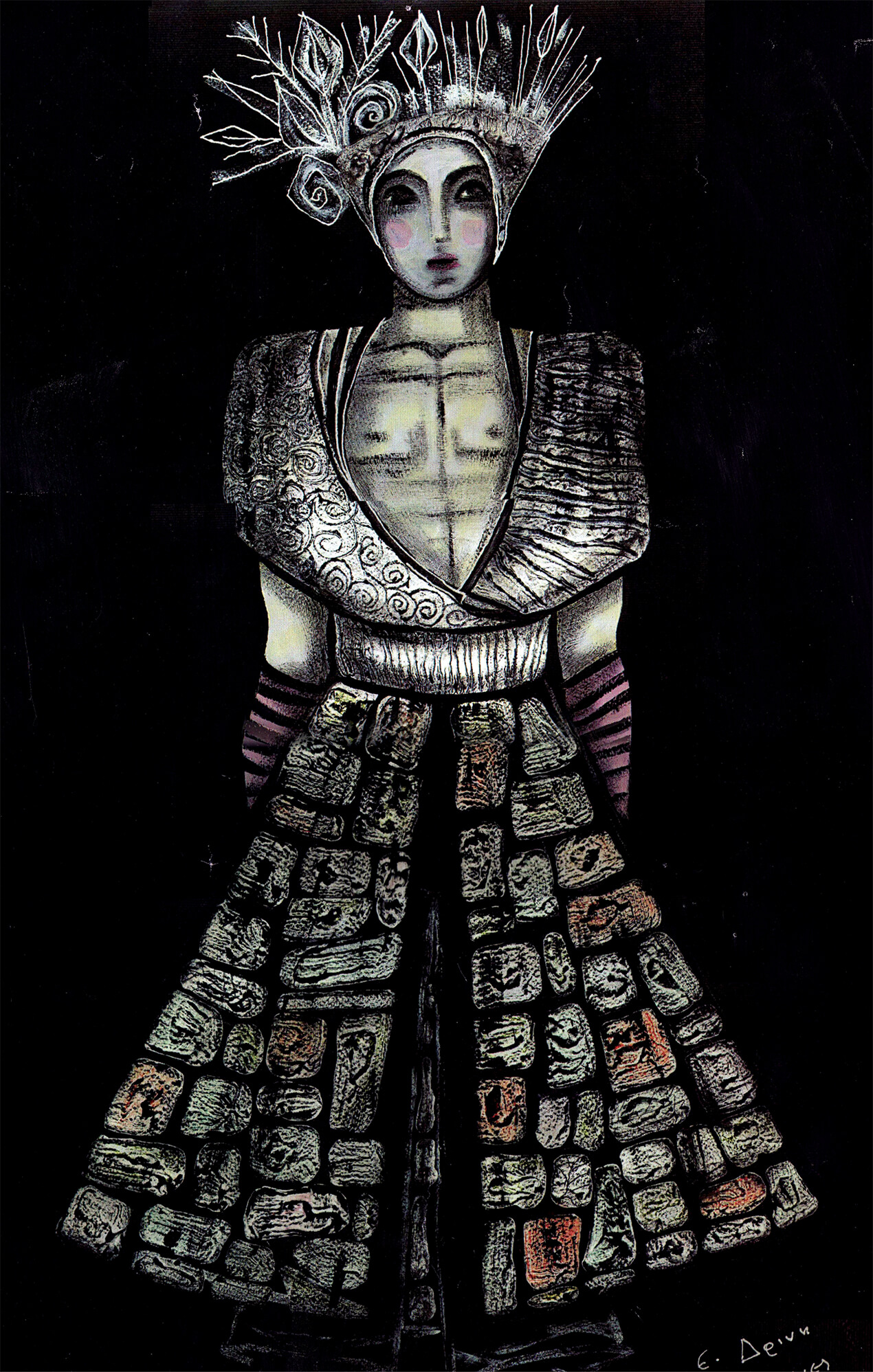
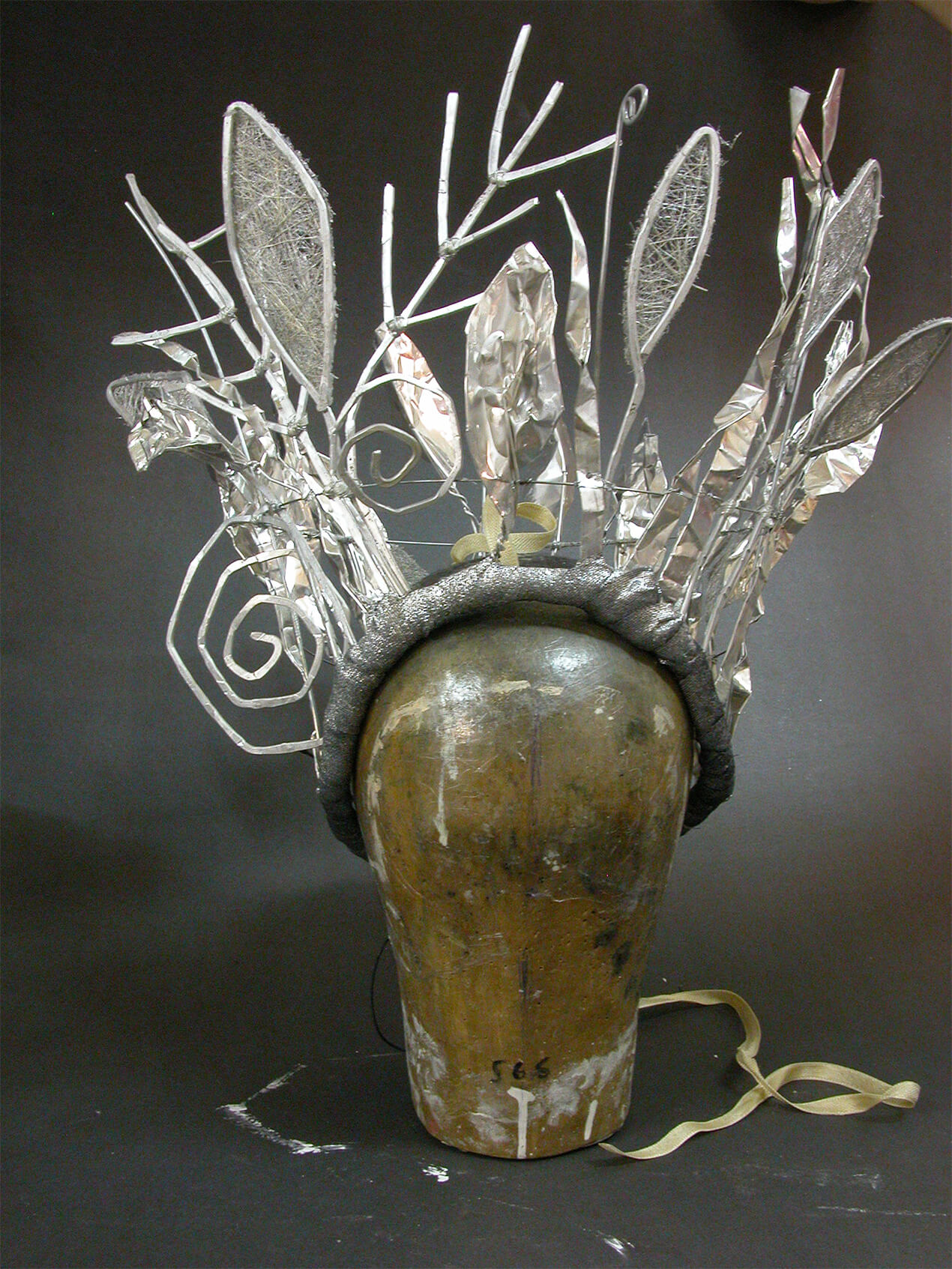
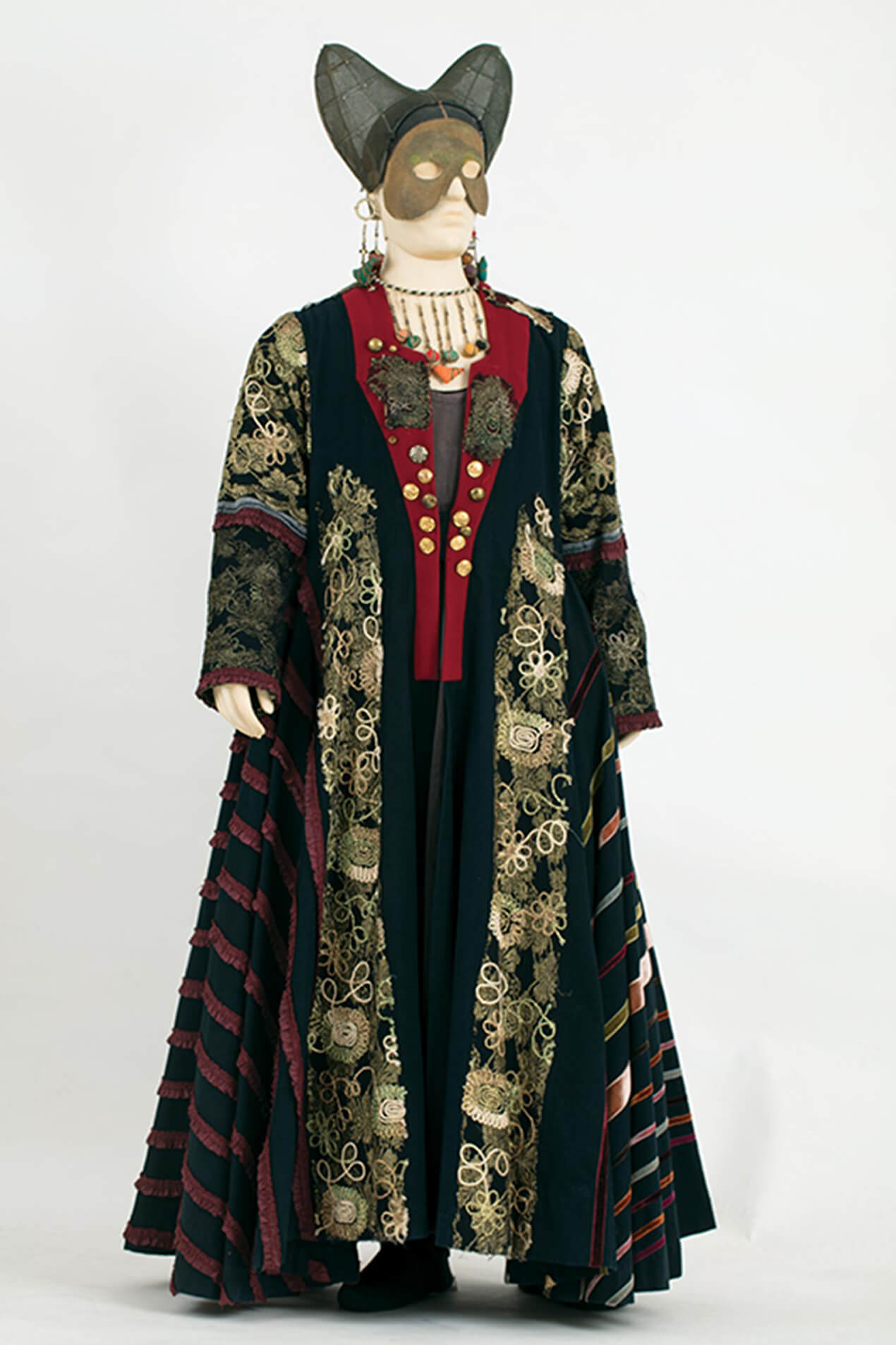

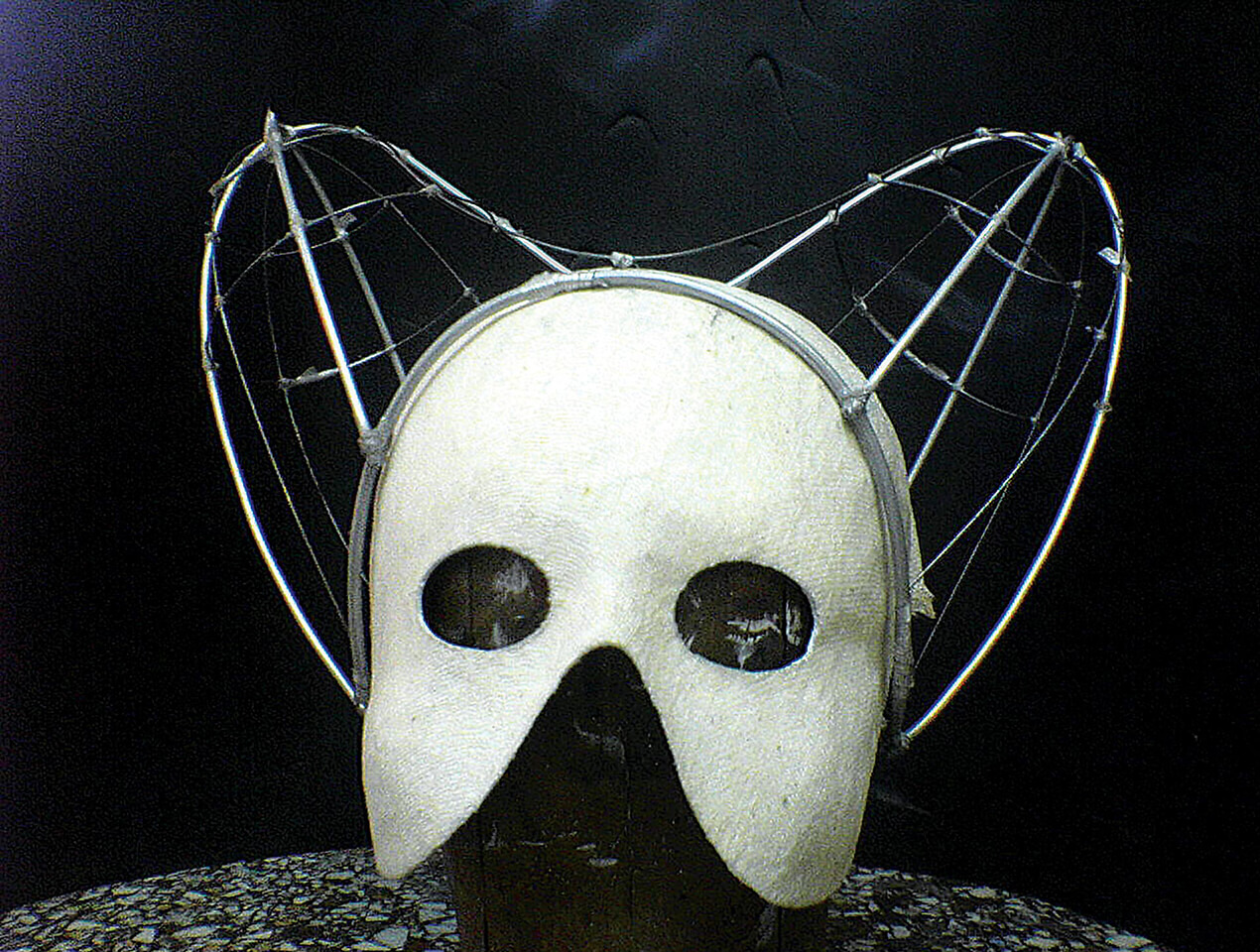
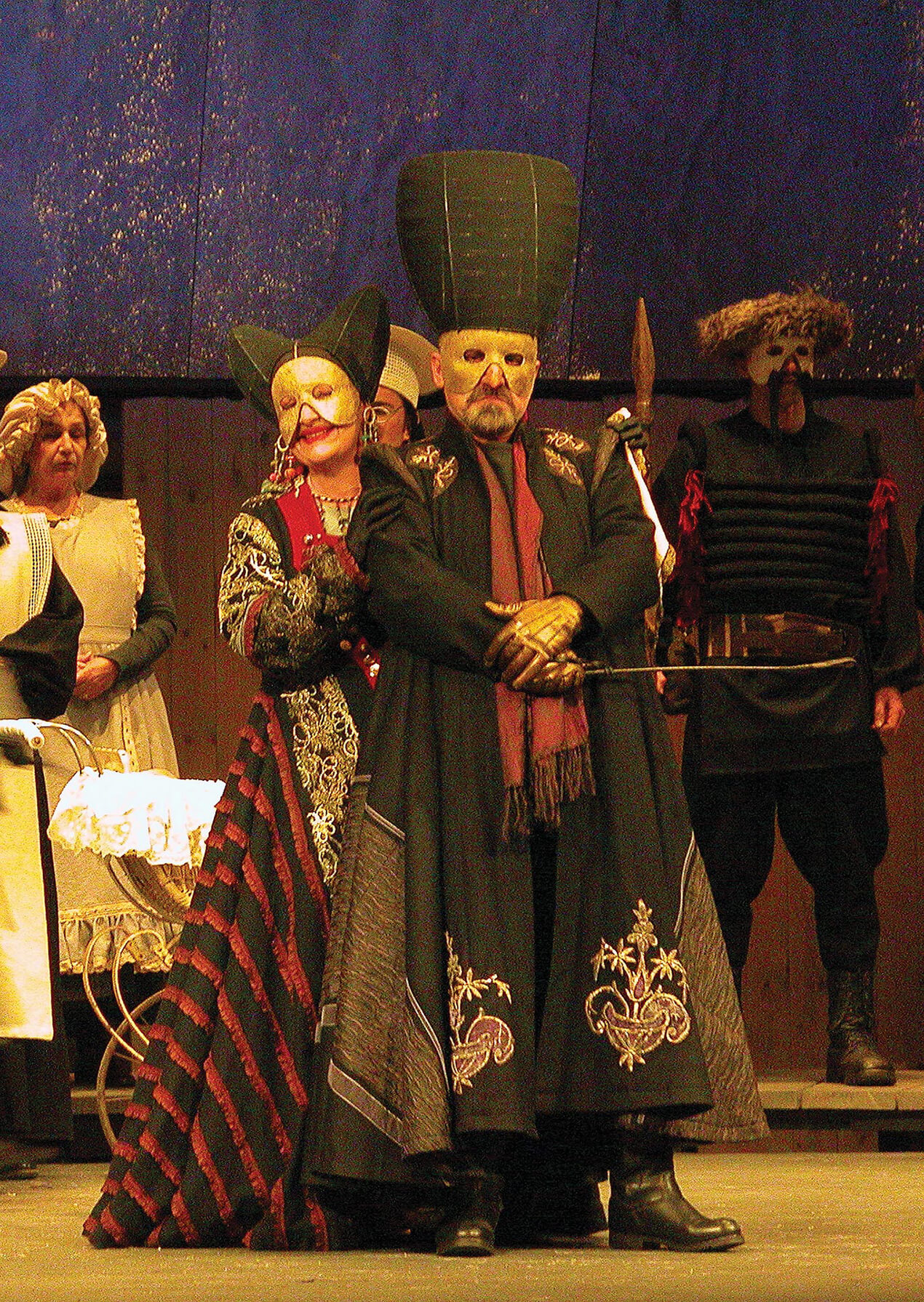
The Caucasian Chalk Circle
(Bertolt Brecht)
2005 - National Theatre of Greece
Direction: Costas Tsianos
Costume design: Ioanna Papantoniou
Special constructions - Masks: Dimitra Kaisari
Costume by Ioanna Papantoniou for Natella Abashwili’s character. Basil Papantoniou Foundation archive.
Construction details of mask and headpiece for Natella Abashwili’s costume.
Final stage rehearsal photograph, Natella Abashwili and Governor. Photo: Dimitra Kaisari.
Odyssey
(Homer)
2010 - Municipal and Regional Theatre
of Kozani
Direction - Adaptation: Maria Vardaka
Set & Costume design: Sofia Pantouvaki
Special constructions: Dimitra Kaisari
Costume drawing by Sofia Pantouvaki for Charybdis ’costume. Sofia Pantouvaki’s archive.
Charybdis ’ head at the workshop for a fitting. Photo: Dimitra Kaisari.
Performance photograph, Charybdis, Odysseus and companions. Photo: Theodoros Chliapas.

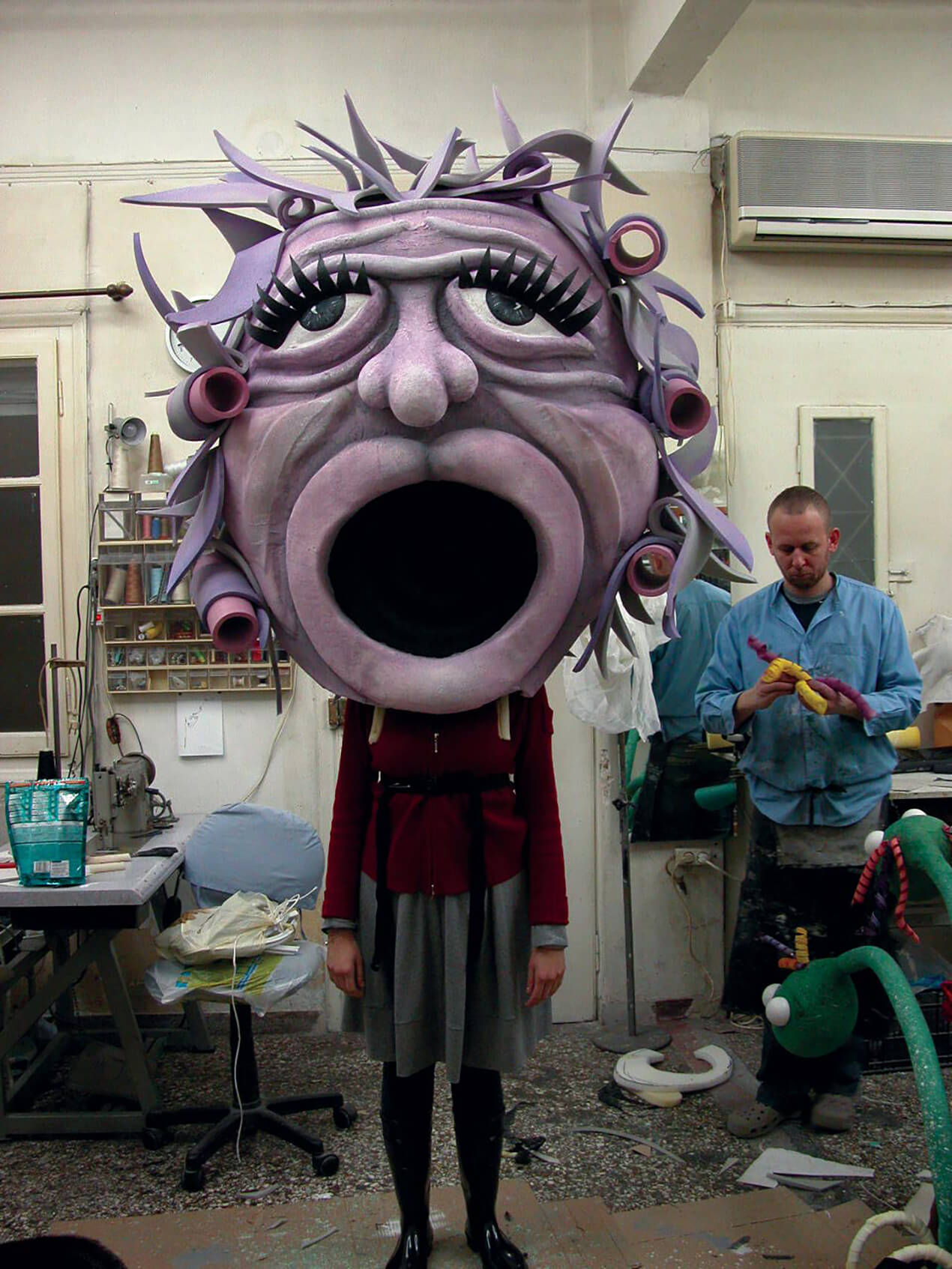
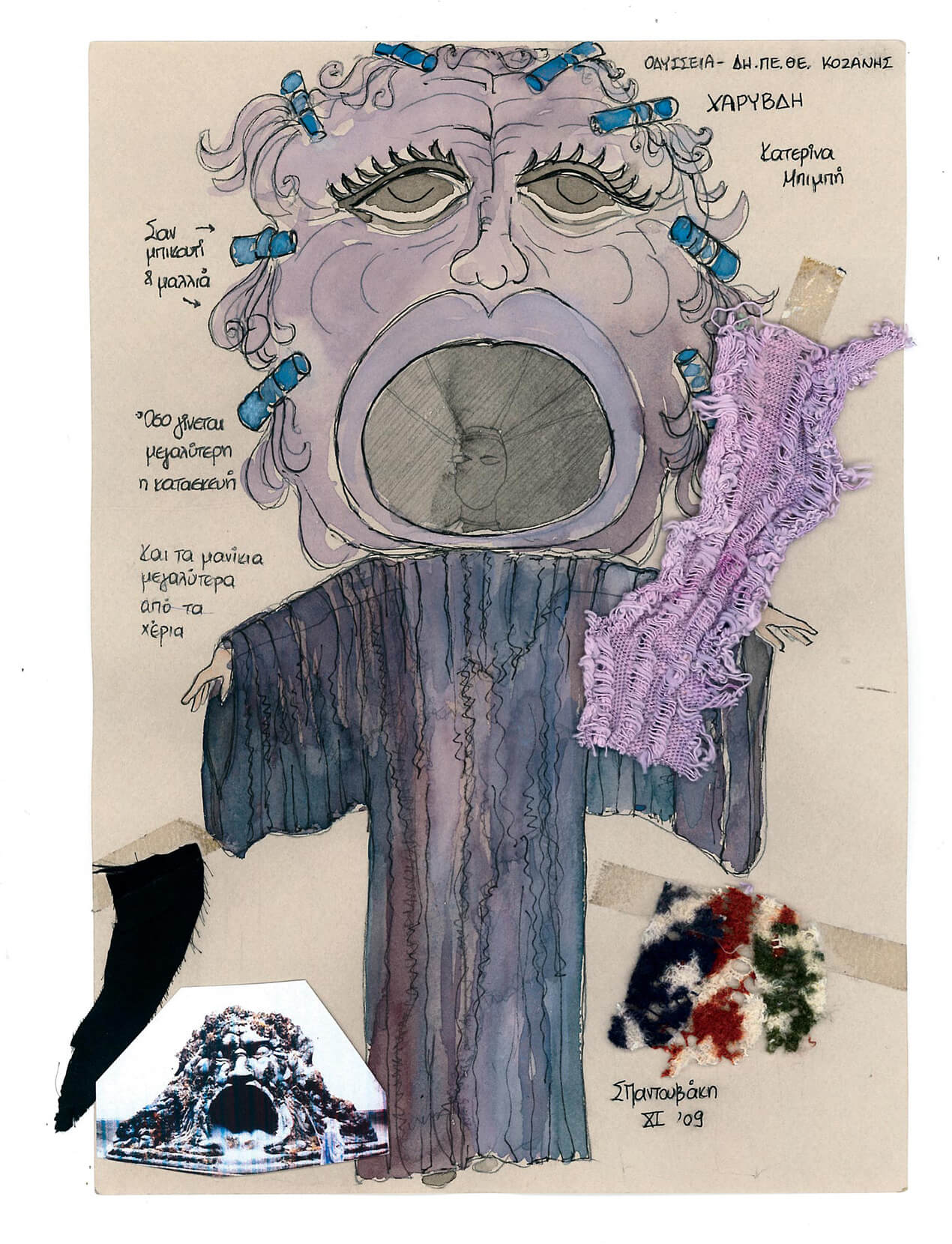
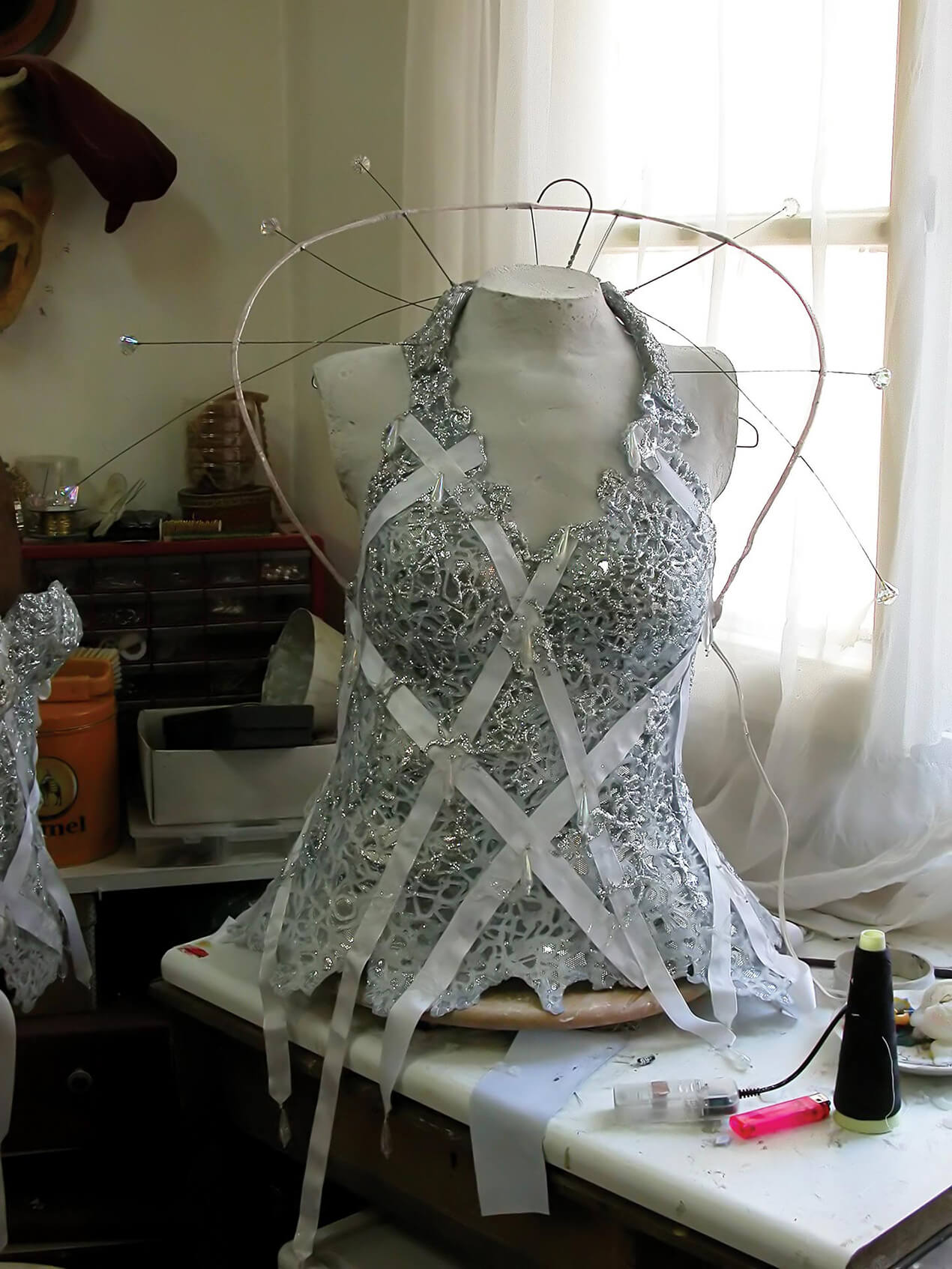
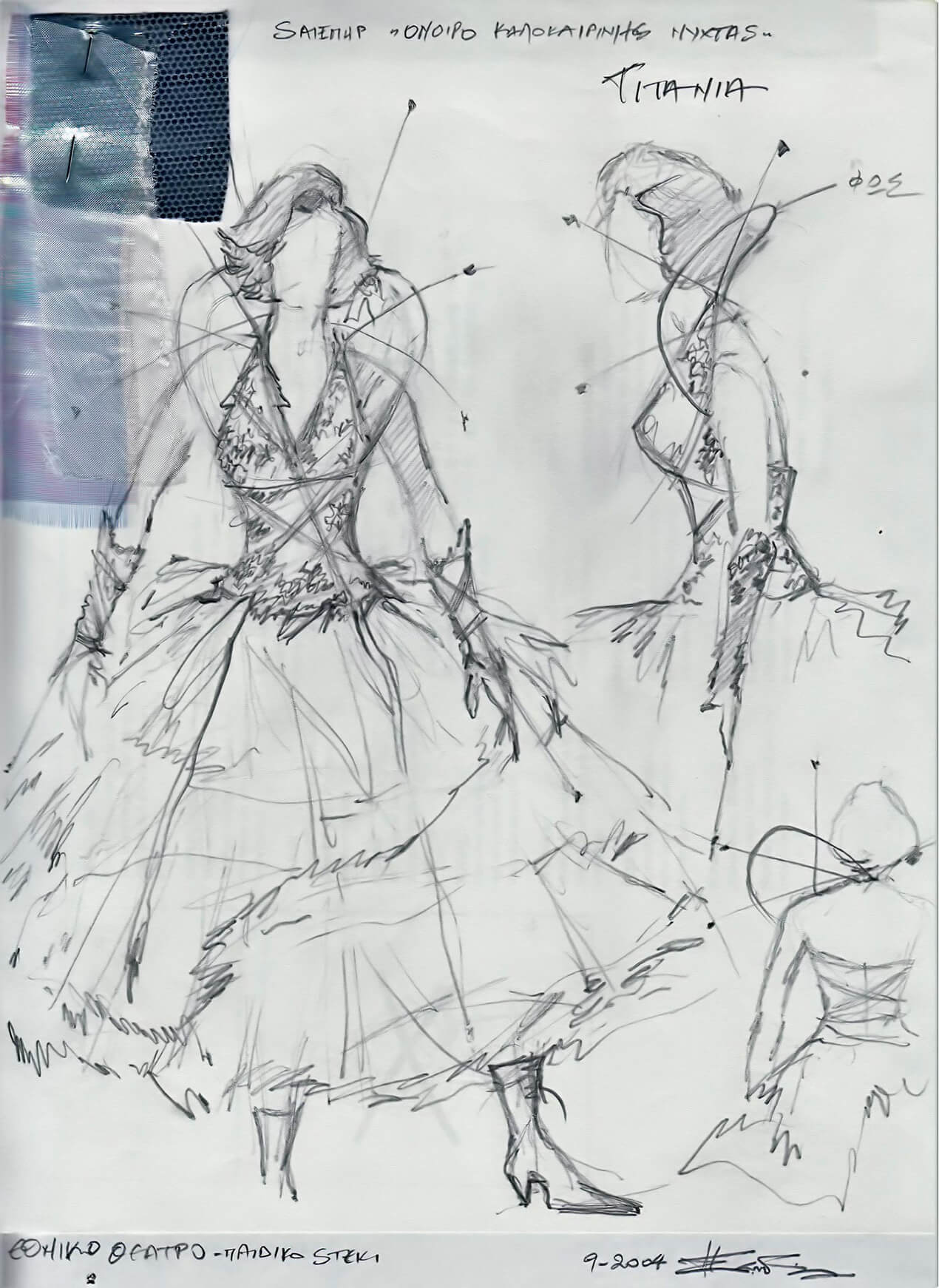
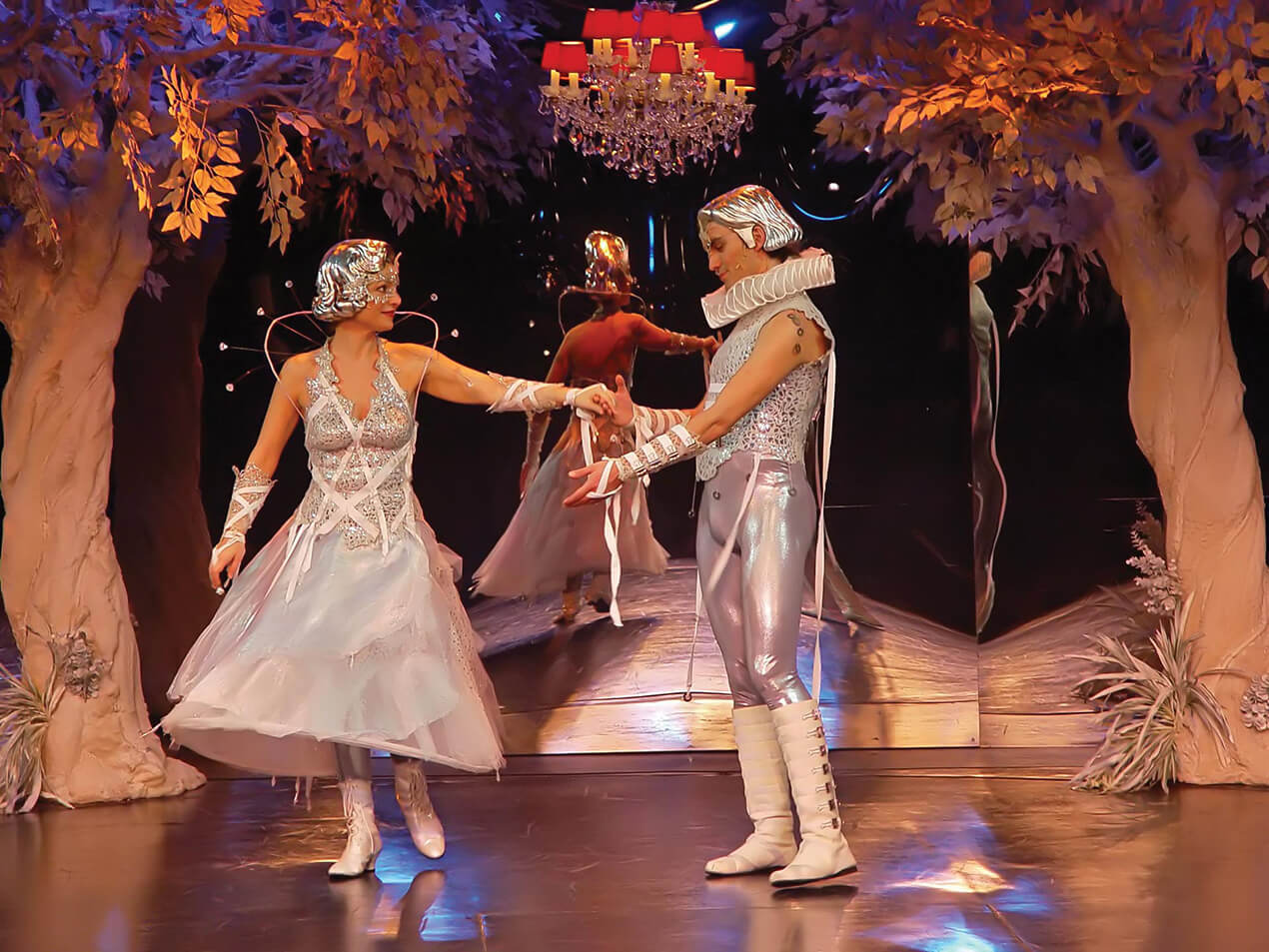
A Midsummer Night’s Dream
(William Shakespeare)
2004 - National Theatre of Greece: Children’s Stage
Direction: Yannis Iordanidis
Set & Costume design: Nikos Saridakis
Special constructions - Masks: Dimitra Kaisari
The upper part of Titania’s costume at the studio. Photo: Dimitra Kaisari.
Costume drawing by Nikos Saridakis for Titania’s costume. Nikos Saridakis ’archive.
Performance photograph, Titania and Oberon. Photo: Nikos Saridakis.
The Frogs
(Aristophanes)
1998 - National Theatre of Greece
Direction: Costas Tsianos
Set & Costume design: Giorgos Assimakopoulos
Mask and headpiece for the Chorus. Photo: Dimitra Kaisari.

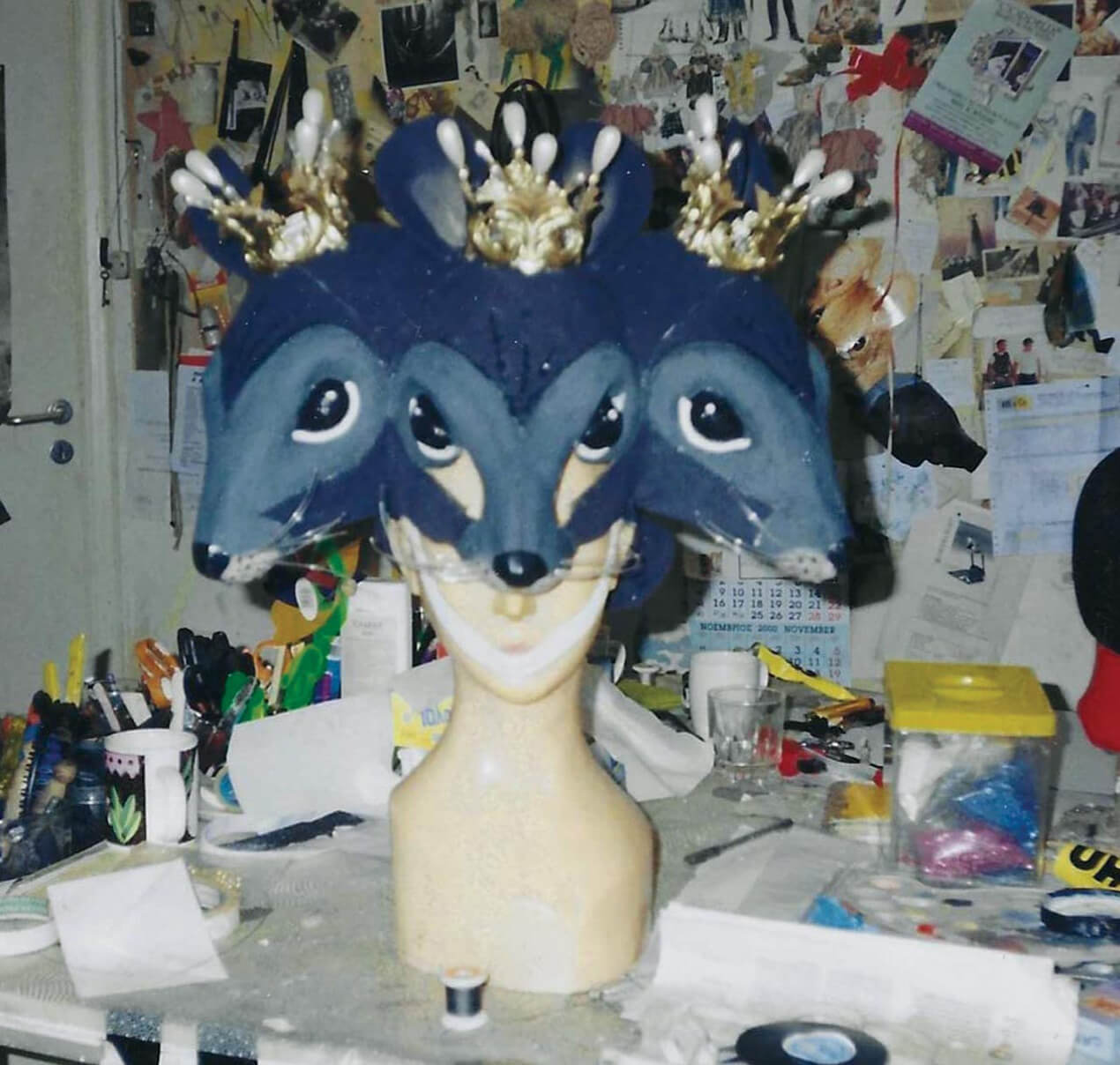
The Nutcracker
(Pyotr Ilyich Tchaikovsky)
2000 - Greek National Opera Ballet /
Megaron - The Athens Concert Hall
Choreography - Set & Costume design: Pierre Lacotte
Costume supervision: Sofia Pantouvaki
Accessories
construction: Dimitra Kaisari
Mask for the Mouse King at the studio. Photo: Dimitra Kaisari.
Prometheus Bound
(Aeschylus)
2021 - Poreia Theatre
Direction: Aris Biniaris
Costume design: Vasiliki Syrma
Special constructions - Masks: Dimitra Kaisari
Bia’s mask. Photo: Mariza Kapsabeli. / Masks of Cratos and Bia. Photo: Mariza Kapsabeli.
Prosthetic limbs for Io’s figure. Photo: Dimitra Kaisari.
Io. Photo: Efi Gousi.
Io. Performance photograph: Mariza Kapsabeli.

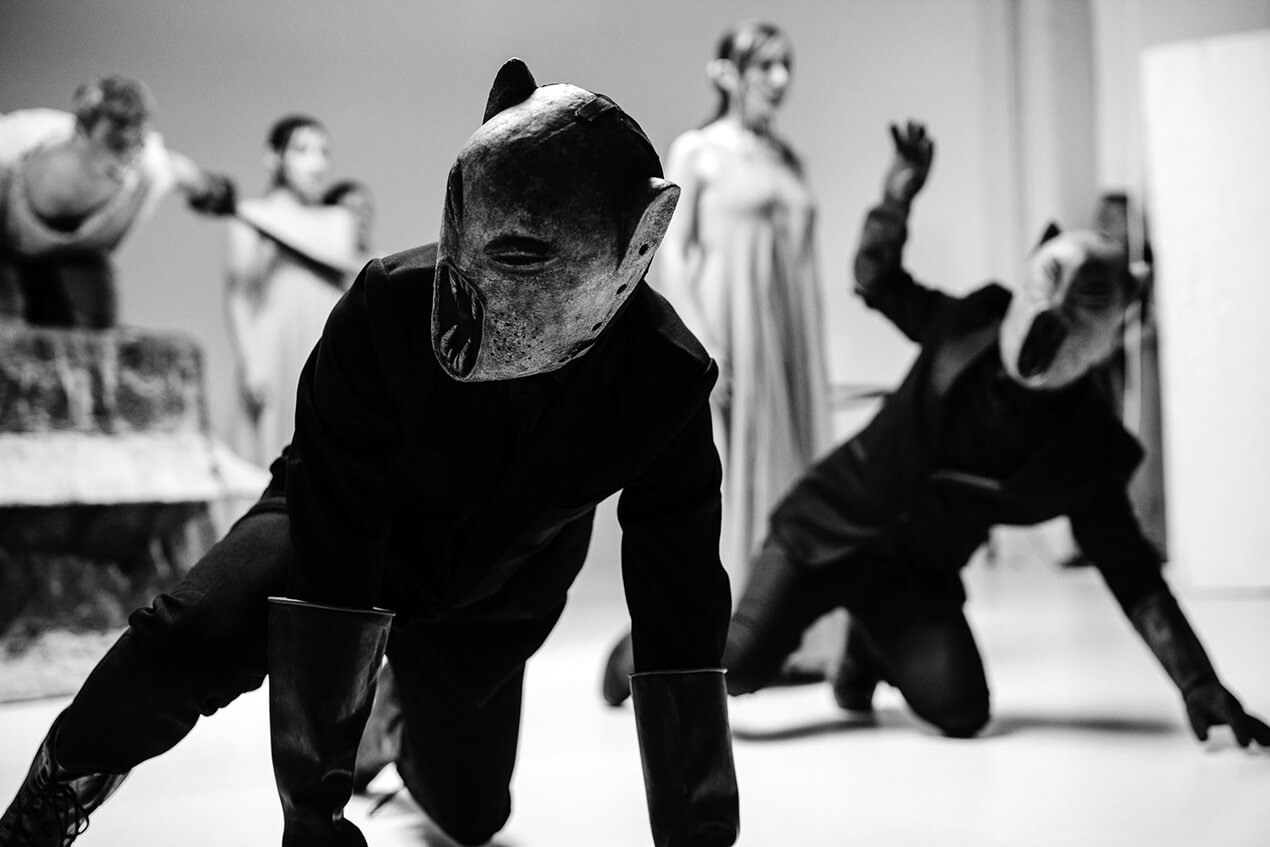
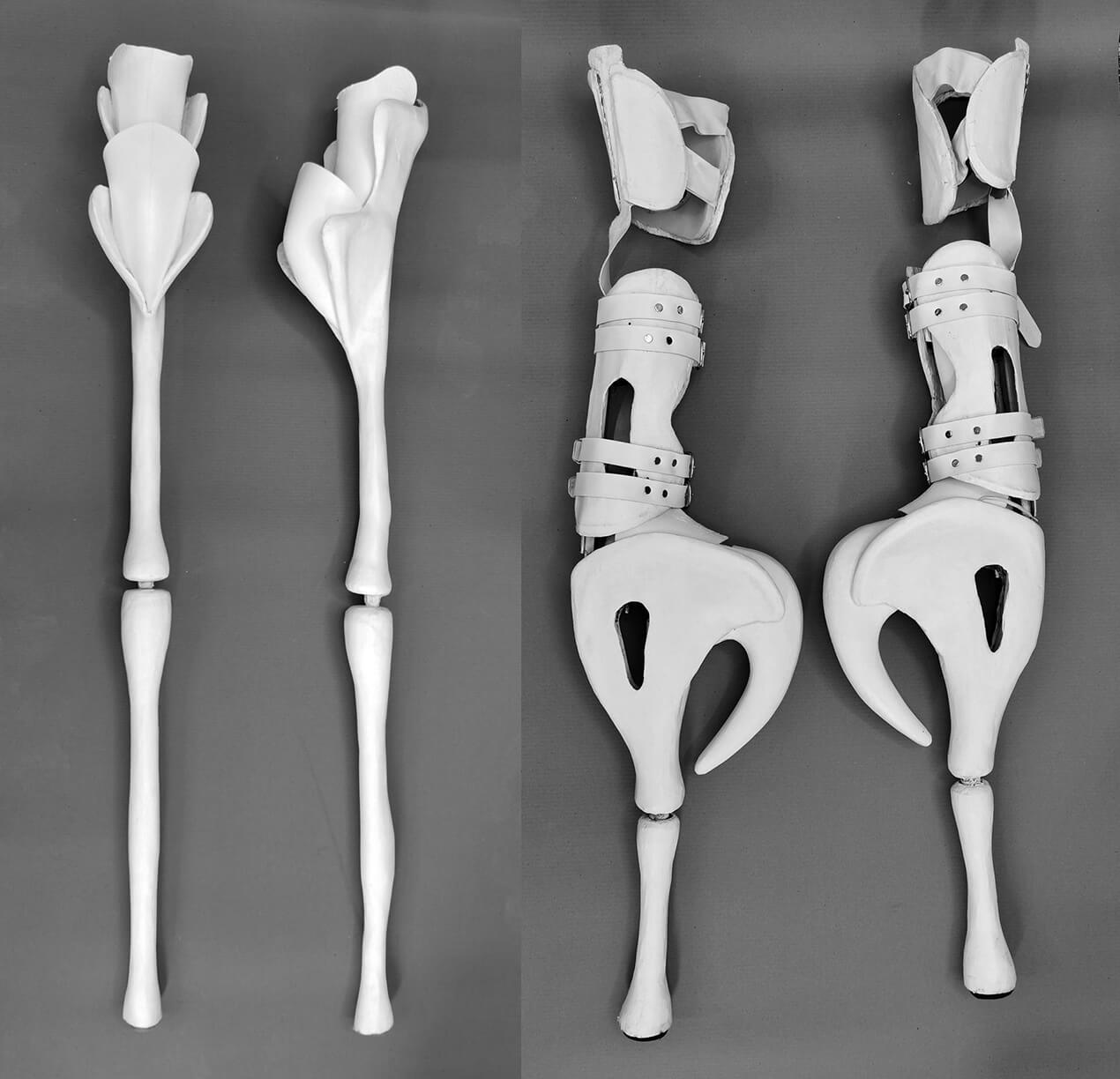
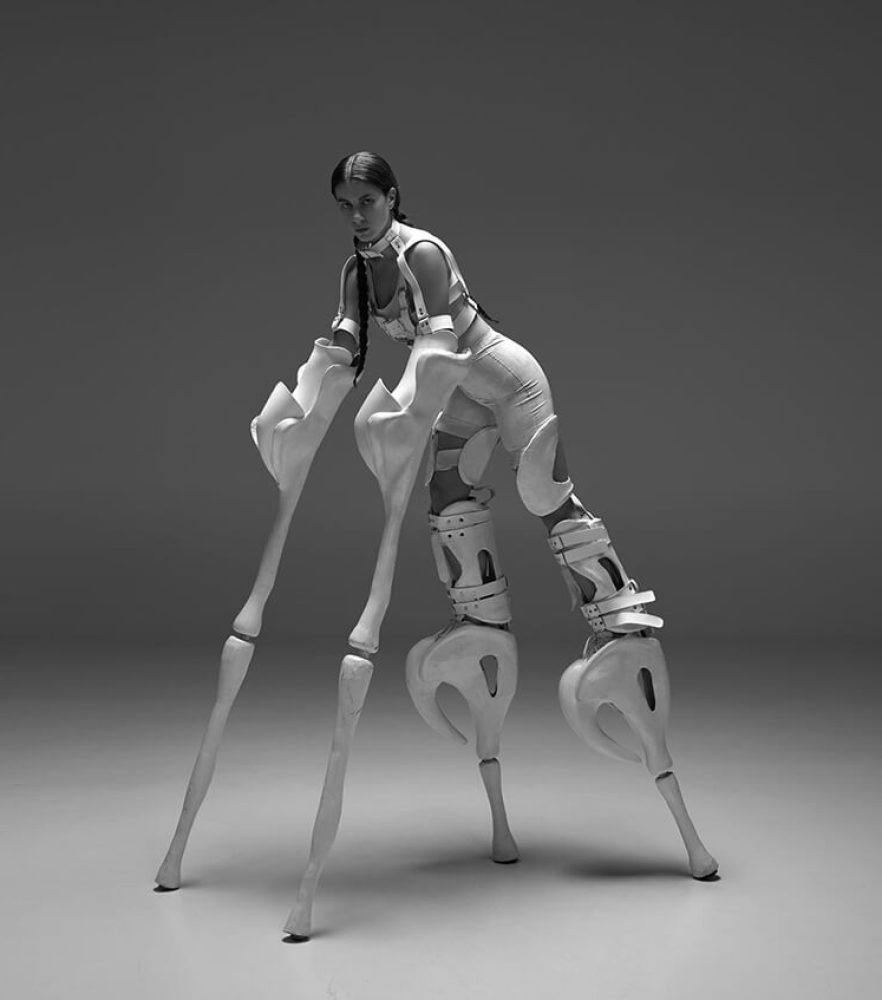
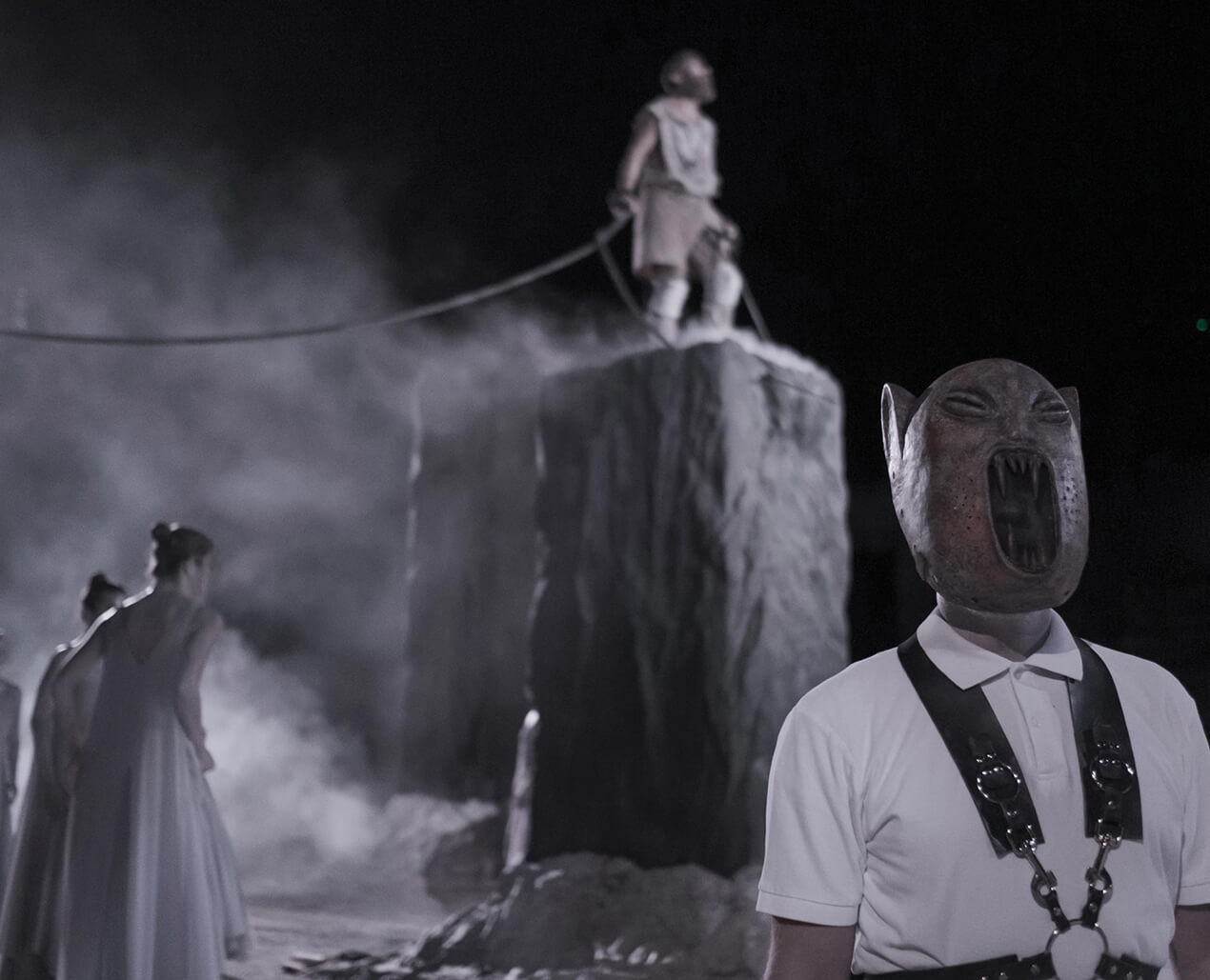


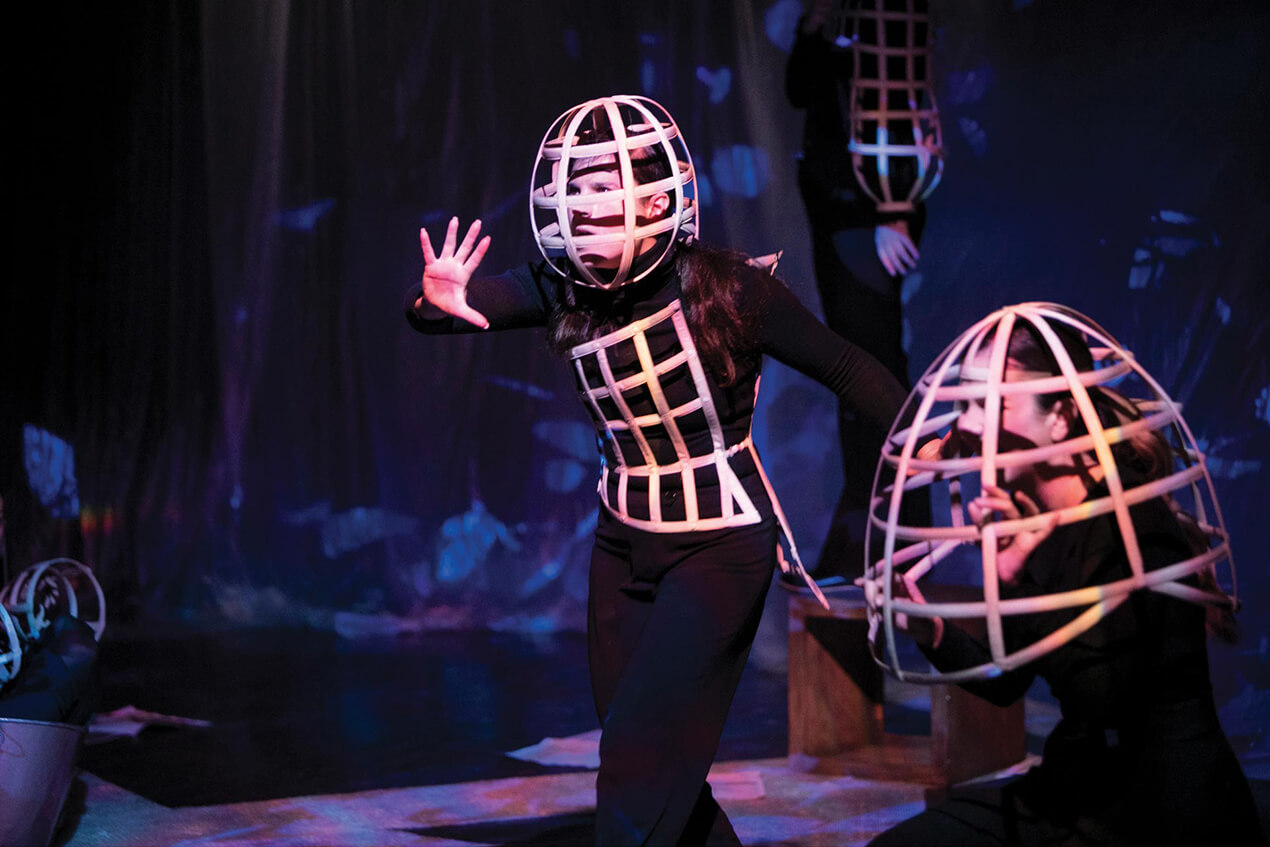
Cagebirds
(David Campton)
2021 - Alkmini Theatre
Direction - Set design: Konstantina Nikolaidi
Costume design: Maria Filippou
Special constructions: Dimitra Kaisari
Performance photographs: Andreas Nikolareas
Electra
(Euripides)
2022 (Summer tour 2022)
Tagaris Theatre Enterprises
Direction: Giorgos Lyras
Set & Costume design: Apollon Papatheocharis
Special constructions - Masks: Dimitra Kaisari
Headpiece of wire with rhinestones. Photo: Dimitra Kaisari.
Performance photograph: Nikos Zikos.
Costume drawing by Apollon Papatheocharis for the costume and headpiece of Clytemnestra. Dimitra Kaisari’s archive
